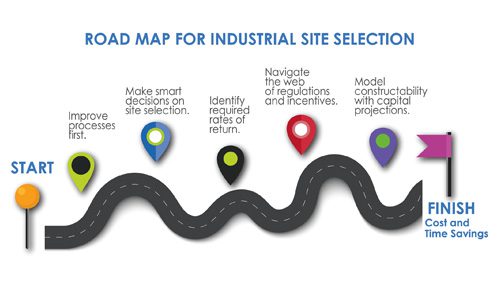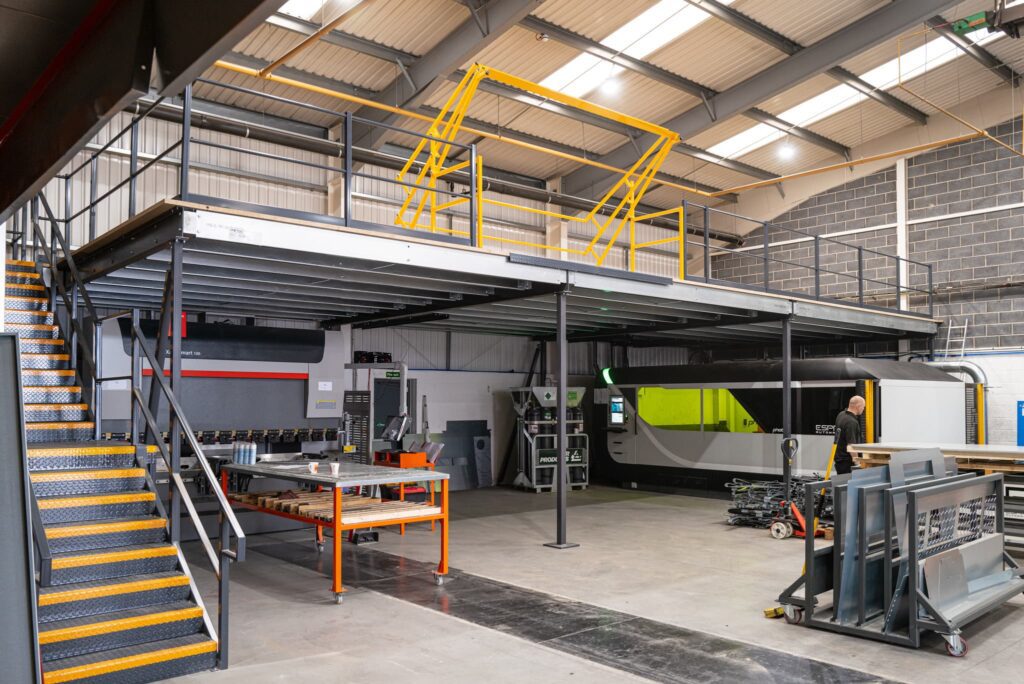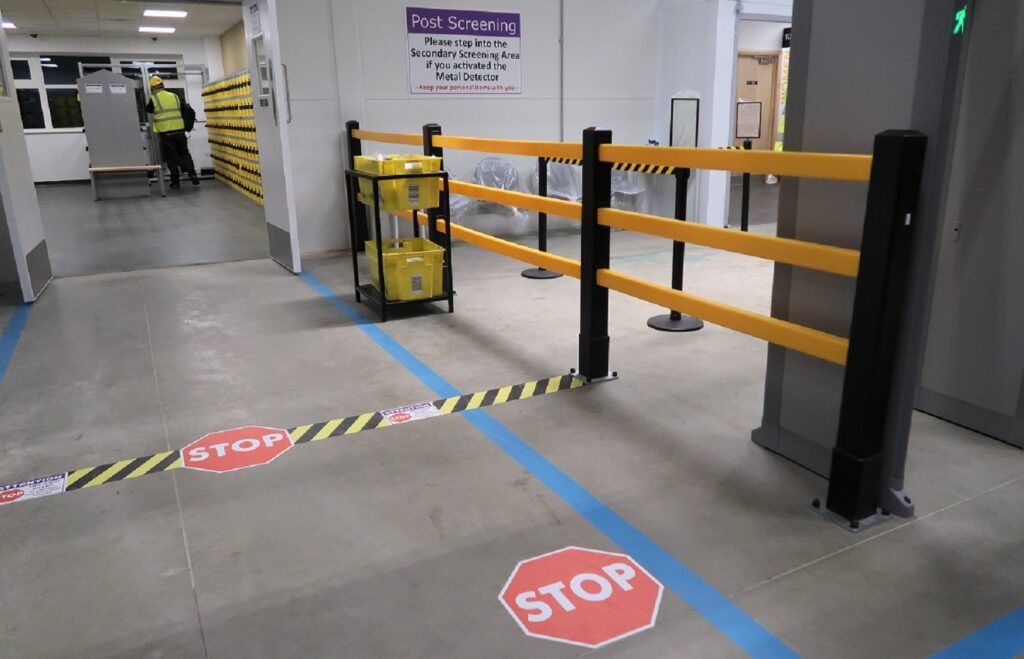Large Factory Designrequires careful planning and consideration of various factors. Here are some key considerations when designing a large factory:
1. Site Selection: Choose a suitable location for your factory that takes into account factors such as proximity to transportation networks, availability of utilities, and potential for future expansion. Consider environmental regulations and any specific requirements related to the industry or production processes.

2. Layout and Workflow: Design the factory layout to optimize workflow and minimize material movement. Analyze the production process and create logical flow patterns to ensure efficient movement of materials, products, and personnel. Consider the need for separate zones for different production stages or departments to avoid cross-contamination or interference.
3. Space Utilization: Efficiently utilize the available space to maximize productivity. Consider the height of the facility and evaluate options for mezzanine floors or high storage systems to increase storage capacity without expanding the building footprint. Use space-saving storage solutions and implement efficient material handling systems.

4. Safety and Compliance: Prioritize safety throughout the design and construction of the factory. Ensure compliance with local building codes, safety regulations, and industry-specific standards. Incorporate proper signage, safety barriers, emergency exits, and fire protection systems. Design workstations and equipment with ergonomics and safety in mind to minimize the risk of accidents or injuries.

5. Utilities and Infrastructure: Plan for the necessary utilities and infrastructure to support the factory’s operations. Consider power supply requirements, water supply, waste management systems, and HVAC systems. Design the electrical and plumbing systems to accommodate the machinery and equipment, and plan for future capacity needs.
6. Equipment and Machinery Placement: Strategically position equipment and machinery to optimize workflow and minimize bottlenecks. Consider the sequence of operations, maintenance requirements, and accessibility for repairs. Provide adequate space around machinery for safe operation, maintenance, and cleaning.
7. Material Handling and Logistics: Design efficient material handling and logistics systems to facilitate the movement of materials and products within the factory. Consider the volume and type of materials, storage requirements, and transportation needs. Incorporate proper material handling equipment, such as conveyors, cranes, or automated systems, to streamline processes.
8. Employee Facilities: Provide appropriate facilities for employees to support their well-being and productivity. Include amenities such as restrooms, break areas, locker rooms, and a clean and comfortable cafeteria or eating area. Consider providing ample parking space for employees and designated areas for employee entrances and exits.
9. Technology Integration: Incorporate technology solutions to enhance efficiency and productivity in the factory. This may include automation systems, robotics, data monitoring and analysis tools, and communication networks. Plan for the necessary infrastructure to support these technologies and consider future scalability.
10. Environmental Considerations: Implement sustainable design practices to minimize environmental impact. Incorporate energy-efficient lighting, insulation, and HVAC systems. Explore renewable energy options, waste management practices, and water conservation measures. Comply with environmental regulations and strive for sustainability in all aspects of the factory’s operations. Designing a large factory requires collaboration among architects, engineers, and industry specialists to ensure a comprehensive and efficient design. Conduct thorough research, engage with experts, and consider the specific needs of your industry and production processes to create a factory that meets the highest standards of productivity, safety, and sustainability.
MAK Architect’s also designed many factories like Select Cable Factory at Qilla Sattar Shah Sheikhupura, Rice Mill in sialkot for haji Akbar a reputed rice dealer in Pakistan.
Factory design architecture
Factory design architecture involves creating functional, efficient, and safe spaces that meet the specific needs of manufacturing and industrial processes. Here are some key architectural considerations for factory design:
1. Layout and Flow: The layout of a factory should be carefully planned to optimize the flow of materials, products, and personnel. Consider the sequence of operations and arrange workstations and machinery in a logical order to minimize movement and maximize efficiency. Plan for clear pathways and sufficient space for the safe movement of personnel and equipment.
2. Zoning and Segmentation: Divide the factory into zones or segments based on the different stages of the production process or the types of operations being performed. This segregation helps to prevent cross-contamination, enhances safety, and improves workflow. Clearly define and mark these zones to ensure smooth operations.
3. Space Utilization: Efficiently utilize the available space in the factory by considering storage requirements, machinery placement, and material handling systems. Explore vertical space utilization through mezzanine floors or high storage solutions to maximize storage capacity without increasing the factory footprint. Optimize the use of floor space for machinery and workstations.
4. Lighting and Ventilation: Adequate lighting and ventilation are crucial for the comfort and safety of workers. Incorporate natural light wherever possible, and complement it with artificial lighting to provide a well-lit working environment. Ensure proper ventilation to maintain air quality and regulate temperature. Consider the use of skylights, windows, and ventilation systems to achieve optimal conditions.
5. Structural Integrity: Design the factory with a strong and durable structure capable of supporting heavy machinery, equipment, and loads. Consider factors such as load-bearing capacity, seismic resistance, and the integration of necessary structural elements for the safe operation of the factory. Engage structural engineers to ensure the structural integrity of the facility.
6. Safety and Emergency Preparedness: Prioritize safety throughout the design process. Incorporate safety features such as fire-resistant materials, emergency exits, safety barriers, and clear signage. Designate emergency response areas and ensure that safety equipment and protocols are in place. Integrate fire protection systems and emergency alarm systems.
7. Utilities and Services: Plan for utilities and services required to support the factory’s operations. This includes electrical systems, plumbing, water supply, waste management, and HVAC systems. Ensure that the infrastructure can handle the demands of the equipment and machinery being used. Consider future expansion and the flexibility to accommodate changes in utility needs.
8. Accessibility and Ergonomics: Design the factory to be accessible to all employees, including those with disabilities. Ensure that walkways, entrances, exits, and workstations comply with accessibility standards. Consider ergonomic principles in the design of workstations and machinery to promote worker comfort and reduce the risk of injuries.
9. Aesthetics and Branding: While functionality is paramount in factory design, aesthetics should not be overlooked. Incorporate the company’s branding elements into the design, such as color schemes, signage, and architectural details. Create a visually appealing environment that aligns with the company’s identity and values.
10. Sustainability: Integrate sustainable design practices into the factory architecture to minimize environmental impact. This may include energy-efficient lighting systems, renewable energy sources, water conservation measures, and waste management strategies. Strive for sustainability throughout the design and operation of the facility.
Factory design architecture requires a multidisciplinary approach, involving architects, engineers, and other specialists. Collaboration with industry experts and adherence to local building codes and regulations is essential to ensure a successful factory design that promotes efficiency, safety, and productivity.
